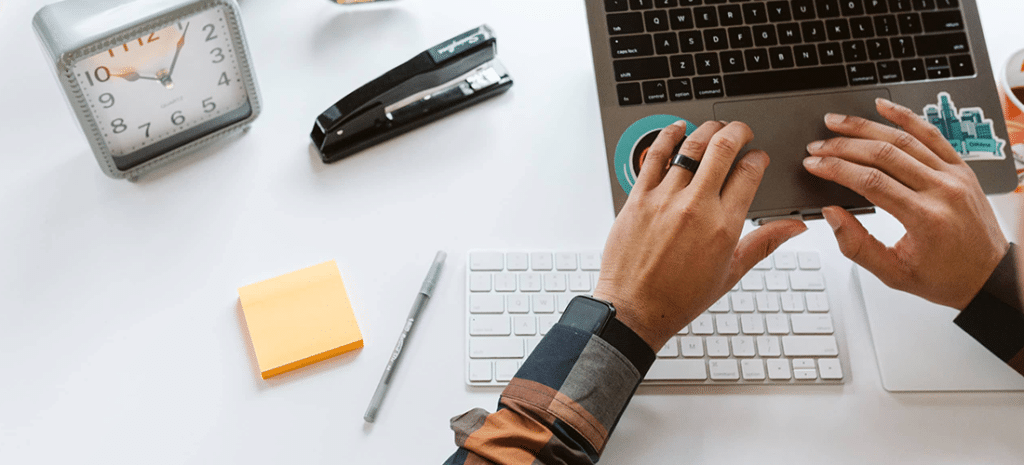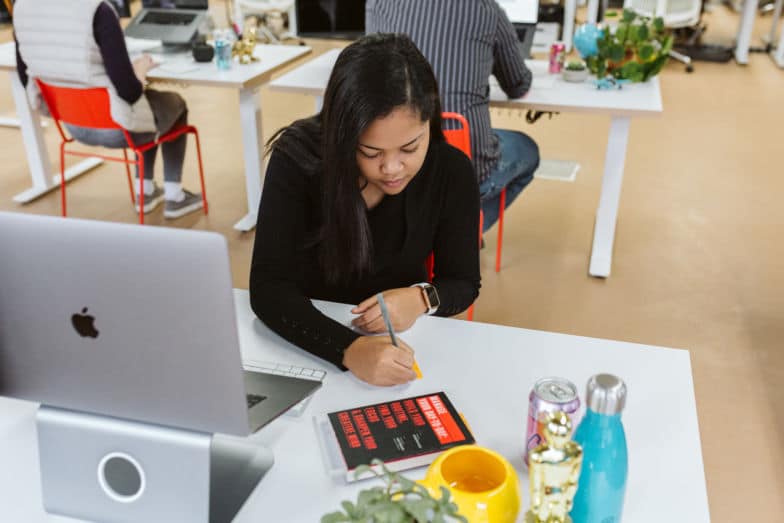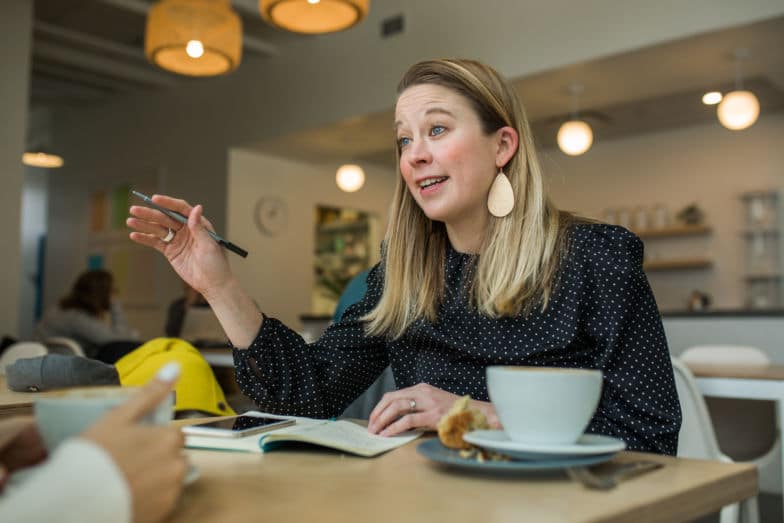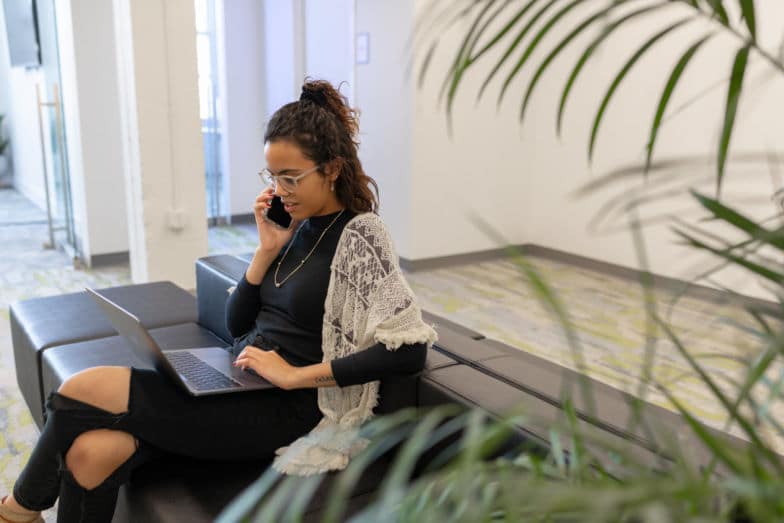
How to Get 10 New Freelance Clients in 30 Days (or Less)
This guest post was written by Preston Lee founder of Millo. To learn more about Millo, visit their website.
I was recently on a coaching call with a freelancer who seemed to have everything together. Her business was humming along, she had regular work, and her clients loved her.
I was a bit shocked at her response when I asked her, “What is the biggest challenge you face in business right now?”
She responded that she was great at closing a deal if it came to her, but had absolutely no idea how to generate new client leads outside of word-of-mouth marketing.
In my experience coaching freelancers for over a decade, I shouldn’t have been all too surprised.
Getting new clients is, far and away, the number one problem freelancers face.
And it’s not just freelancers. Businesses of all sizes struggle with steady, consistent, predictable client leads—enough that some business owners lay awake at night worrying that the ”famine” monster of the feast-famine cycle is lurking in the shadows.

On the other hand, I’ve met dozens of freelancers who seem to have it figured out. They bring in new clients every month on autopilot and never wonder where their next project is coming from.
Today, I’d like to share what I’ve learned in working closely with the second kind of business owner mentioned above. The ones that have more than enough work and even turn away projects they’re not excited about.
These pros can easily add 10+ new clients to their repertoire every month if they choose to.
And if not, they know next month there will be another 10+ knocking on their door looking to hire them.
Imagine what 10 new clients in 30 days might do to your business. No more barely scraping by, no more eating macaroni and cheese three nights a week.
Today, I’ll share what I’ve learned so far in this in-depth guide!
1. Know your Numbers
Finding new clients is largely a numbers game.
Before I can dive in and teach you the rules of this game (that you may not even know exists), you have to know your current numbers.
To get started, answer the following questions:
A. ______ How many client pitches do you make every month?
This number should be the total number of clients you attempt to close a deal with in a given month. At this stage, it doesn’t matter if you’re reaching out to them or they’re coming to you.
B: ______ How many new clients do you close each month?
This number is also simple: how many new clients do you sign on every month. If the number is less than 1, then do the math to figure out the decimal. For example, if you sign a new client every 3 months, the monthly answer would be .33.
C: ______ What’s your current close rate?
The answer to this question is found by dividing B/A from the answers above. For example, if you make 20 pitches every month (A) and you get 2 new client each month (B) then your current close rate is 0.05 (2/40) or 5%.
n: ______ What’s the average number of pitches it takes to land one client?
To determine the answer, use the numbers above to fill in the following formula with the answers above: C x n = 1.
Continuing with my example above, the formula would look like this: 5% x n = 1. In other words (stick with me here) how many total pitches do you have to make in order to get 1 new client? In my example, the answer is 20. 5% x 20 = 1.
These numbers will be critical in making fast progress toward building a solid client base. We’re going to use them in the next section.
Once you know your current numbers, it becomes incredibly easy to see a path forward to getting more freelance clients.
The secret lies in understanding something called the “Law of Averages” and I’ll explain how powerful this knowledge will be in the next section.
2. Harness the “Law of Averages”
The “Law of Averages” supposes that all future events are likely to balance any deviation from the presumed average of previous events.
That’s heavy.
Here’s what it means in plain english:
If your current close rate is 5% (from the example above) and you cold-call 8 potential new clients this month who all decline to hire you, then certainly the 9th and 10th try will result in success, right?
Not necessarily.
Scientists say it’s a Fraud
I have to be completely honest with you: To statisticians and scientists, the “Law of Averages” doesn’t actually exist.
But to freelancers (or anyone in sales) it can be completely life-changing.
Statisticians argue the “Law of Averages” is a false hope. They call it the “Gambler’s Law” because a gambler believes that nine losing pulls on a slot machine will result in a winning 10th pull.
It’s the Same When you Flip a Coin
Just because you flip a coin five times and get all “heads,” doesn’t mean your 6th flip is any more likely to result in “tails” than the other five.
The coin doesn’t care what the other flips were and each new flip has a 50% chance of landing “tails” up.
But there’s one crucial factor that pulling a slot machine lever and flipping a coin don’t account for:
Improvement.
And that’s where the “Law of Averages” works in a freelancer’s favor—in ways it’s hard for scientists to understand.

How the “Law of Averages” Works in Your Favor
The formula for the Law of Averages is 1/n where n represents the number of attempts it takes to succeed at something—in your case, closing a new client.
If n = 20, as with my example in section 1, then it takes 20 attempts before you successfully get hired by a new client.
Therefore, if you don’t improve in salesmanship, audience targeting, or deal closing, you can plan on getting about one new client for every 20 pitches.
Now the fun can begin (thanks for hanging in there).
On your first month of pitching new clients, your number might look something like this (again from my examples above):
| Pitches | Close Rate | New Clients |
| 20 | 5% | 1 (20 x .05) |
To leverage the power of the Law of Averages, you have to factor in that element that flipping coins and pulling slot machine levers doesn’t employ: talent and improvement.
In the next section, I’ll show you how small, simple improvements can make a huge impact toward your goal of getting 10+ clients in 30 days or less.
3. Remember: Small Changes = BIG Results
Getting 10 new clients in 30 days will require you to think a little bigger, yes. But all it takes is a little bit of adjusting to see some quick, major results.
Let’s take the baseline example from above and start playing with the numbers a bit to illustrate what I mean here.
Once again, here’s our baseline performance. This is what you’re already achieving with your current effort and talent.
| Pitches | Close Rate | New Clients |
| 20 | 5% | 1 (20 x .05) |
There are two easy ways to increase the output in this equation (New Clients): either increase the number of pitches or increase the close rate.
Here’s what the math would look like if you improve your close rate from 5% to 10%.
| Pitches | Close Rate | New Clients |
| 20 | 10% | 2 |
The math is simple: Get better at closing, and you’ll get more clients.
A no-brainer.
Alternately, you could increase the number of pitches you make in a month to increase new client acquisition. It would look like this:
| Pitches | Close Rate | New Clients |
| 100 | 5% | 5 |

The math is pretty simple here too: increase your pitches, and you’ll increase your number of new clients.
But, the real power is found when you increase both at the same time. If you not only scale up your outreach, but also increase your conversion rate, suddenly reaching the goal of 10 new clients in 30 days doesn’t seem so impossible.
| Pitches | Close Rate | New Clients |
| 100 | 10% | 10 |
That leaves us with two goals then—which I will spend the remainder of this article providing tactical, actionable advice on:
- Increase your outreach (number of pitches)
- Increase your close rate (number of new clients)
4. Increase Your New Client Outreach
We’ll start with the easiest of the two challenges first: increasing your new-client outreach.
While some salesmen argue you should improve your close rate before you scale up your outreach, I believe the best way to actually improve as a salesman is to simply sell more.
Here are some of my best tips for increasing client outreach:
A. Dedicate Time Every Day to Outreach
This may sound overly simple, but there’s real power in doing daily new client outreach or business development.
Far too many freelancers wait until work starts to dry up before they start aggressively reaching out to potential new clients which often leaves them wallowing in famine.
Take Action
To apply this to your routine, set a time on your calendar every day that you’ll dedicate to sales outreach. It doesn’t have to be long. Thirty minutes or less will be just fine.
During this time any of the following actions (or related actions) are what you’re aiming for:
- Send outreach emails
- Send follow-up emails
- Get on the phone with potential clients
- Respond to inbound inquiries
- Research local business meetups
- Attend local meetups
- Interact in social media groups
- Send hand-written mail
- Work on direct mailers

Marketing every day not only increases your chances of always having new work, but also allows you to practice incessantly to improve your ability to close a deal (more on that later).
Remember, practice makes profit.
B. Use Software to Scale up Your Outreach
If you find yourself short on time, but want to keep scaling up your outreach efforts, you may want to consider using some sort of technology solution to make the process easier.
I’ve used software like Reply or Pipedrive to help me successfully scale my client outreach, but there are dozens of sales software that can help you both get organized and scale quickly.
Take Action
To apply this piece of advice, do some research on sales software or CRM for freelancers and commit to trying your favorite option.
Of course, there are plenty of free tools like Trello or Boomerang for Gmail that you can use to get your feet wet without breaking the bank.
You can also sign up for sites like FlexJobs and SolidGigs who will find new freelance jobs for you while you’re working on billable projects. You can also tap into marketplaces like Upwork or Freeup who will alert you when there are new clients interested in working with you.
When it comes to scaling up your outreach, technology can be your biggest asset.
C. Hire Someone to Help With Outreach
If you prefer to work with a real human being instead of technology; or if your outreach scales beyond what you can handle on your own even with a great outreach app, then the next logical step would be to hire someone for assistance.
There are thousands of highly qualified sales-oriented freelancers you can vet, talk to, and ultimately hire to help scale your outreach.
Getting support can range anywhere from hiring a virtual assistant to simply find email addresses and manage your inbox, to hiring a marketing expert who builds a plan, executes, and sends you new clients on a regular basis.
At any level, hiring someone to help with sales and outreach can exponentially multiply your time and effort.

Take Action
Hiring someone doesn’t mean you have to become an LLC, build out payroll, or hire an HR director. It can be as simple as searching for sales professionals on sites like Upwork or similar marketplaces.
If you feel like your outreach could benefit from bringing someone else on board, start by testing the waters with a low-hour, low-cost, low-risk subcontractor who is willing to let you test their services for a month or two and re-evaluate.
D. Work on Inbound Leads for Long-Term Wins
Of course, the only thing better than lots of new leads from your new outreach efforts is to get inbound leads on a regular basis.
My friends Ian and Matt are both freelancers who get 100% of their new clients from SEO (search engine optimization). In fact, they both get so many inquiries, they have to turn many of them down.
How would that be!?
“My primary source of leads is Google,” Ian explained to me recently. “When people need a logo, they search for ‘logo design’ or ‘logo designer’ and thankfully I’m lucky enough to be in the top results [in the UK].”
Matt agrees.
“Every decision about content and design is focused on getting more clients to find and contact me. Over time, that strategic effort has put me on the first page of Google and I’m frequently turning down work for lack of availability.”
Take Action
While this piece of advice definitely falls outside the 30-day window I’ve promised in the headline, I couldn’t just not include it.
For a good long-term source of new clients, start investing now in SEO by taking courses (I recommend this one by Matt Giovanisci), reading articles from sites like ahrefs, or watching videos like these ones from Backlinko.
It’s Simple Math
Remember, this is all a numbers game. If you currently close 1 out of every 20 contacts you speak with, it’s just a matter of talking to 200 contacts next month and you’ve automatically got your 10 new clients.
Of course, the smarter thing to do is not only increase the sheer number of pitches, but also get better at pitching your services.
In the next section, I’ll cover some of my best advice for getting better at selling.
5. Improve Your Close Rate (Get Better at Selling)
Selling can be a bit of a dirty word in the world of creative freelancing. If you’re a web designer, a developer, a writer, a graphic designer, you probably shrink at the thought of becoming a salesperson.
If you haven’t realized it by now, though, it’s time someone break the news to you:
Anyone who is in business is also in sales.
This is particularly true if you’re a singular freelancer or a small agency. Not only is it your job to provide incredible quality and service to your current clients, but it’s also your responsibility (maybe even moreso) to ensure you’re always on the lookout for more work.
With that in mind, here are some simple ways you can get better at selling (without turning into a sleazy salesperson).

A. Understand Your Target Audience Better
If you’re worried about seeming too sleazy when it comes to selling your services to future clients, then this first step will be critical to your success.
The reason many salespeople come off as too sleazy or too pushy is because they haven’t taken the time to understand their target customer and what they actually need or want.
This understanding is what makes the difference between a solar panel salesman who knocks on your door during dinner (ugh) and when a hardware store salesman tells you which little metal thing you’re supposed to buy to fix your leaky faucet (phew).
Both are selling opportunities.
One we hate (yes, solar panel guy, I said “hate”) and the other offers us relief.
As you understand your target audience better, you can more easily provide relief (instead of annoyance) and people will be happy to listen more, recommend you, and hire you again.
Take Action
Talking about target audiences is FAR easier than actually becoming an expert on what your target audience needs.
For that, start by talking to your current clients about what struggles they face in relation to the services you provide.
Asking “why” repeatedly (not annoyingly, but in a caring way) can uncover some real pain points.
For example:
—“Why do you need a new website?”
—”I just feel like my business should have an online presence.”
—”Interesting. And why is that?”
—”All the marketing gurus out there say I need a website.”
—”Yeah, I’ve heard that too. Why do you suppose they’re suggesting that?”
—”I don’t know. Maybe so my customers can find me in Google?”
—”Perfect. What’s the ultimate goal for begin found on Google?”
—”More sales, obviously.”
—”Of course. Thanks!”
Review the question sequence again. If you had just stopped after the first question, your marketing materials or sales pitch might include words like
“Build your online presence” or “Get your business online”—both of which are valid points, but don’t address the real pain your potential client is experiencing (not enough sales).
This is the solar panel approach.
Instead, by asking a series of deeper questions, you uncover that your client wants a website in order to get more sales.
Now, your pitch can include things like:
- Testimonials from past clients whose sales increased after the new site went live.
- Verbiage showing you understand and appreciate the need for a customer-centric site, not just something pretty.
- Statistics from past clients (or similar companies) who saw a lift on bottom-line revenue after creating or upgrading their website.
Getting to know your target audience better may be the #1 thing you can do to become a better salesperson.
Once you know them, you can serve them.

B. Send More Effective Outreach Emails
Of course, getting to know your potential client better isn’t going to magically bring in more clients.
One way to see fast results is to improve your ability to close a deal via email. While calling a potential client on the phone can be powerful (more on that in a sec), email is far more scalable.
If you wanted to, you can use tools like Reply (mentioned above) to send hundreds or even thousands of email pitches every week.
Pair that kind of scale with a more effective email pitch and you’re well on your way to 10 new clients in 30 days.
Take Action
To send more effective outreach emails, start by reading this in-depth report where Backlinko studied more than 12 million outreach emails to determine which ones were most effective.
Among many other gold-mine findings in their study, you’ll learn:
- How important it is to follow-up with a potential client (I almost never get a response on the first try)
- How to personalize your subject lines and email bodies for a huge boost in responses
- Which day of the week is best for sending cold email pitches to potential clients
You can also take a look at my PDF workbook and course called Cold Emails that Convert where I explain the methods I personally use to achieve 50-70% open rates on emails to complete strangers.
C. Get on the Phone
If you’re only using email marketing as a way of contacting new clients, you might be missing out on a huge opportunity.
That’s because one study estimates the average professional (think: your potential clients) receives over 120 emails per day.
That’s a lot of email.
No wonder popular services like Gmail or Outlook have started filtering out business-related emails (ahem…. your pitch) and putting them in less-visited tabs or folders.
Compared to email, though, phone calls are much less common. Which means you’re more likely to get a response when you pick up the phone and actually call someone.
Another study estimates you can expect an 8.1% response rate when you use the phone, compared to .03% for email.
That’s a difference of 270x if you’re keeping track.
Pick up the phone and you’re 270x more likely to get a response from a potential client.

Take Action
The recommended action for this section doesn’t get much simpler. Just pick up the phone.
Of course, you’ll want to study what it takes to make a good sales pitch over the phone.
And you’ll have a lot of rejection (especially at first), but the numbers make so much sense, it’s definitely worth a shot.
Making a Plan to Get 10 New Clients in the Next 30 Days
To sum it all up, here’s what it’s really going to take for you to find 10 new clients in the next 30 days:
- Know your numbers How many pitches will you have to make to get one new client?
- Harness the “Law of Averages” How can you improve your chances of getting a new client with fewer pitches?
- Make small, intentional changes By keeping track of how many pitches and closes you’re achieving, then increasing those numbers, you can earn more clients.
- Scale up your outreach Use technology and daily habits to simply increase the number of pitches you make every month.
- Improve your ability to close As you reach out to more potential clients, learn what it takes to close a deal and repeat what works on your next pitch.
It’s an extraordinarily simple formula that, when put into use, can take your freelance business from slow-going to high-performing in a matter of months. And to ensure your clients remain happy with their website for as long as they partner with you, make sure they’re receiving high-quality WordPress hosting from WP Engine!
All imagery was taken by photographer Kimberly Bailey
